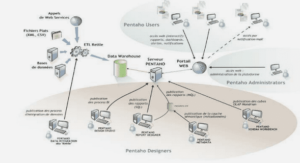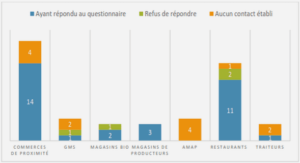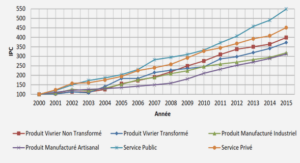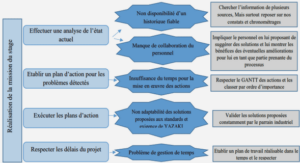AGILE SOFTWARE PROCESS IN THE LITERATURE REVIEW
ISO 9001 AND AUDITING PRINCIPLES
Introduction
ISO 9001 is a Quality Management Standard (QMS) that provides a set of generic quality requirements for the industrial organizations, and it can be applied to the software process life cycle Kevin (2003). Researchers Hass, Johansen et al. (1998), Ferreira, Santos et al. (2007), Makdee and Praneetpolgrang (2005) and Fuller (2006) have studied the implication of ISO 9001 certification on quality improvement for software organizations by implementing certain requirements throughout all the software development phases, like design, development, production, installation, and maintenance. The term quality has been defined in IEEE-610.12:1992 as “The degree to which a system, component, or process meets specified requirements”. The same definition is also in ISO 90003:2008. The ISO 9126:2001 has defined the quality as the totality of characteristics of an entity that bear on its ability to satisfy stated needs. ISO 9126:2001 considers software product quality from three different viewpoints: internal quality, external quality and quality in-use.
• Internal quality is “the totality of the characteristics of the software product from an internal view”.
• External quality is “the totality of the characteristics of the software product from an external view”.
• Quality in-use is “the user’s view of the quality of the software product when it is used in a specific environment and a specific context of use”. The quality of a software product is highly related to the process selected to develop the software product: for example ISO 9126 directly associates the software process quality and the software product quality as shown in figure 2.1. The quality of the software product is directly influenced by the quality of the process used to develop it. Another approach is defined by the Capability Maturity Model (CMM), which is in use in many organizations.
The CMM provides a framework for process improvement that consists of « key process areas » influential in various aspects of the development process and resultant software quality. It has been indicated in Boehm and Turner (2003) that it is hard to find a general purpose software process in an organization and if the organization fails to identify the appropriate software process model this often results in customer dissatisfaction, flawed software products, projects over budget and overdue project completion. This chapter is organized as follows: Section 2.2 presents the results of survey evidences on ISO 9001 and software organizations.
Adoption of ISO 9001 in software organizations
This section focuses on summarizing the papers and industrial surveys that explore the impact of the adoption of ISO 9001 in software organizations. It will assist in gaining an insight about the implications of ISO 9001 certification on the software organizations. According to a 1996 survey by Bradstreet and Irwin, 10,648 ISO 9001 certificates were issued in North America with ISO 9001-registered organizations in the software category which accounting for only 5.2 percent of the total number of registered organizations in that geographic area. Business services and electronic and electrical equipment were the two industrial sectors holding the most ISO 9001 certificates in the software category in 1996. The research conducted by Hass, Johansen et al. (1998) provides information about the importance of ISO 9001 certification for the software organizations in order to improve the software development processes. The research is based on the BOOTSTRAP methodology and the CMM (capability maturity model). A numerical scale from 1 to 5 was defined based on CMM for determining the maturity level of the organizations processes. Through this methodology, 25 Danish owned software organizations operating in US were assessed during April 1996 to September 1997. The organizations have been divided into one group of 12 organizations with an ISO 9001 certificate and another group of 13 organizations without an ISO 9001 certificate.
The maturity level of the Danish organizations was evaluated in terms of the maturity levels scale based on CMMI – See figures 2.2 and 2.3.
• The maturity distribution of the organizations with an ISO 9001 certification has been improved. Along with this, it has been noted that ISO 9001 certified organization have more employees specially those who are dedicated for quality assurance, process control and configuration and change management. • Non-certified organizations are unable in reaching the maturity level of the certified organizations in both software process methodologies and project management. • It was also observed that most of the organizations have maturity distribution approximately equals to 1.25 for non-certified with ISO 9001 and 2.5 for certified with ISO 9001. • The data also reveals that the software quality management and other software related processes of the ISO certified organizations improved, compared with ISO non certified organizations (Hass, Johansen et al, 1998). The research conducted by Ferreira, Santos et al. (2007) is mainly focused towards the improvement approach for the Brazilian company called BL Informatica with respect to the establishment of the software processes in compliance to the ISO 9001 standard and the maturity models, such as MPS.BR (Model for Brazilian Software Process Improvement) and CMMI (Capability Maturity Model Integration). The process of improving software development was evaluated in term of quality aspects, customer satisfaction, reduction of processing time and cost performance index, where the cost performance index is defined as the ratio of earned value to actual cost of work performed.
The improvement plan of the software processes was based on the international standards and quality models. The maturity levels were assessed based on CMMI and MPS.BR. The process area was represented based on ISO 9001. The return on investments for the projects was measured in quantitative terms. It reveals that (Ferreira, Santos et al, 2007): 1- During the first phase of the software improvement process, around 44% of the time allocated for the projects is expended on the rework and adjustment activities. Quality assurance framework reduced the rework time. 2- Implementing the ISO 9001 requirements enable the organization to reach CMMI level 3. A noticeable improvement was found in the software development methodologies – specially the verification and validation process. The development team was better aware of identification of defects during the product life cycle phase, which induced benefits for the organization. 3- The cost performance index (CPI) of the company has improved with the implementation of the different phases of the software processes as per the ISO 9001.
The research conducted by Makdee and Praneetpolgrang (2005) is based on the assessment of the effectiveness of the Thai software organizations certified to the international standards of ISO 9001: 2000 and TQS (Thai Quality Software). Field surveys were carried through interviews and a questionnaire accompanied by analysis of data from the software producers and software developers. The organization process effectiveness was assessed based on four factors: financial satisfaction, customer satisfaction, internal business process and learning growth. The interviews were conducted with 56 organizations producing and developing software (23 organizations having ISO 9001: 2000 certification and 33 organizations having TQS certification).The effectiveness of the organizations having ISO 9001: 2000 and TQS certification were compared. – ISO certified organizations represent higher effectiveness as compared to TQS certified organizations in terms of quality and customer satisfaction. – ISO certified organizations are more focused towards customer satisfaction than TQS certified organizations. – Learning and growth perspective of both kinds of organizations were found equivalent effectiveness, which implies that innovation was considered by both (i.e. ISO certified and TQS certified) organizations. Up to 88.2% of the professionals agreed that ISO certified organizations represent higher effectiveness as compared to TQS certified organizations in terms of software documentation, processes of the organization and sales services. The PhD thesis of Griesemer (1999) is based on a field survey of the software development organizations in the USA. The method of data collection used by the researcher is a mailed survey, accompanied by telephone interviews where applicable. The study compared the software development organizations who have received ISO 9001 certification during 1992- 1995 and in 1996 to the non-certified software organizations. The major findings of this study are summarized next: – Differences were found in term of software process improvement. These differences include monitoring of process, process improvement goals and risk management Griesemer (1999). – Differences in software development and software productivity have been identified by ISO 9001 certified software organizations. ISO 9001 software organizations have become more efficient in terms of job satisfaction and budget constraints and the software process productivity. “These findings indicate obtaining ISO 9001 certification is significant within a software development organization” Griesemer (1999). – The customer satisfaction levels were improved by the US organizations having ISO 9001 certification.
A more recent PhD thesis by Fuller (2006) is based on the comparison of the US market (North American organizations that attained ISO 9001 certification during 1990 to 1999) and Japanese market (Japanese organizations that attained ISO 9001 certification during July 1994 to October 2000) with respect to the certification of the software engineering processes. The survey methodology is used by the researcher for conducting the study. For assessing the consequences of certification of the software engineering processes, data was collected from the stock exchange listings. The organizations of both markets were also compared on the basis of the CMM model. The major findings of the study are: – Positive response for the US organizations and negative response for the Japanese organizations having ISO 9001 certification: cost of production for US organizations was reduced and less quality improvement and marketing advantages have been indicated by Japanese firms. – US firms rely on benefits with respect to the marketing and quality aspects of the products, while Japanese firms rely on legal contract related benefits Fuller (2006). The Canadian organizations were selected from the database. The major findings reveal that investing in the certification process will increase competitiveness in the market, improve the software process activities and reduce the cost of production. Therefore, these benefits must be considered within the software development organization Fuller (2006).
|
Table des matières
INTRODUCTION
CHAPTER 1 AGILE SOFTWARE PROCESS IN THE LITERATURE REVIEW
1.1 Introduction
1.2 Software process and software life cycle model
1.2.1 ISO-IEEE viewpoint
1.3 Agile software development
1.4 Related work on agile software processes and ISO 9001
1.4.1 Vitoria (2004)
1.4.2 Vriens (2003)
1.4.3 Wright (2003)
1.4.4 Maurer et al. (2002)
1.5 Agile software process in systematic reviews
1.5.1 Jalali and Wohlin (2011)
1.5.2 Diaz et al. (2011)
1.6 Statistical evidence on agile software adoption
1.6.1 Industry based evidences
1.6.2 Academic based evidences
1.7 Agile software processes
1.7.1 Extreme Programming (XP)
1.7.2 Scrum
1.7.3 Feature-Driven Development (FDD)
1.7.4 Adaptive Software Development (ASD)
1.7.5 Crystal Methodologies
1.8 Comparison of agile processes based on software design and projects requirements
1.9 Experiments classification of agile literature
1.10 Summary
CHAPTER 2 ISO 9001 AND AUDITING PRINCIPLES
2.1 Introduction
2.2 Adoption of ISO 9001 in software organizations
2.3 Evolution of auditing practices
2.4 Auditing for certification
2.5 ISO 9001
2.6 Summary
CHAPTER 3 RESEARCH GOAL, OBJECTIVES, AND METHODOLOGY
3.1 Introduction
3.2 Research motivation
3.3 Research goal
3.4 Research objectives
3.5 Research inputs
3.6 Research users
3.7 Overview of the research methodology
3.8 Detailed research methodology
CHAPTER 4 ANALYSIS OF AGILE-XP FROM ISO 9001 PERSPECTIVE
4.1 Introduction
4.2 Analysis scope and design
4.2.1 Analysis scope
4.2.2 Design process for the analysis
4.3 Mapping results
4.3.1 Planning of product realization
4.3.2 Requirements phase
4.3.2.1 ISO Requirements during software requirement gathering activity
4.3. 3 Construction phase
4.3.4 Design and development verification and validation
4.4 Summary
CHAPTER 5 EXTENDING AGILE-XP USER STORIES TO MEET ISO 9001 FORMALITY REQUIREMENTS
5.1 Introduction
5.2. Terminology
5.2.1 System
5.2.2 System feature and system function from the XP viewpoint
5.3 Design for user stories extension
5.4 Proposed sub processes
5.4.1 Identify the source of the user story
5.4.2 Categories of non functional requirements
5.4.3 Identify the user story relationships
5.4.4 Prioritizing the user stories
5.5 Extended user story for XP
5.6 Summary and Discussion
CHAPTER 6 AN AUDIT MODEL FOR ISO 9001 TRACEABILITY REQUIREMENTS IN AGILE-XP ENVIRONMENTS
6.1 Introduction
6.2 Analysis of traceability requirements in ISO 9001
6.2.1 Support for change management
6.2.2 Cost management
6.2.3 Process improvements
6.3 Design process
6.3.1 Evaluation fundamentals
6.4 Design of the Auditing Model
6.4.1 Scope delimitation
6.4.2 Design of the audit criteria and yardsticks
6.5 Summary
CHAPTER 7 EXTENDING THE AUDITING MODEL BY COVERING THE ISO 9001 MEASUREMENT REQUIREMENTS
7.1 Introduction
7.2 Analysis of measurement requirements in ISO 9001
7.2.1 Analysis of section 8.2.1: customer satisfaction
7.2.2 Analysis of section 8.2.3 of ISO 9001: measurement of processes
7.2.3 Analysis of ISO 9001 section 8.2.4: measurement of products
7.2.4 ISO 9001 section 8.2.2: Internal Auditing
7.4 Existing agile measurement and estimation techniques
7.5 Design process
7.5.1 Engineering design process
7.5.2 Design formulation
7.5.3 Subdivision of design component
7.6.1 A: Auditing criteria for measurement plans
7.6.2 B: Auditing criteria for measurement development
7.6.3 C: Auditing criteria for measurement management
7.6 Summary
CHAPTER 8 CASE STUDIES
8.1 Introduction
8.2 Classification of auditing evidences
8.3 Case studies: agile traceability audit
8.3.1 Context and scope
8.3.2 Traceability audit of Case ATR (Espinoza, Garbajosa)
8.3.3 Auditing for the five case studies based on yardstick TR #6 (Traceability item relationships)
8.4 Case studies: agile measurement audit
8.4.1 Context and scope
8.4.2 Preliminary considerations
8.4.3 Measurement audit of Case BMR (Mahnic, Zabkar)
8.4.4 Auditing of measurement case studies for yardstick MR #5 (Measurement data and models)
8.4.3 Auditing summary of agile measurement case studies
8.5 Summary
CONCLUSION
BIBLIOGRAPHY
![]() Télécharger le rapport complet
Télécharger le rapport complet




